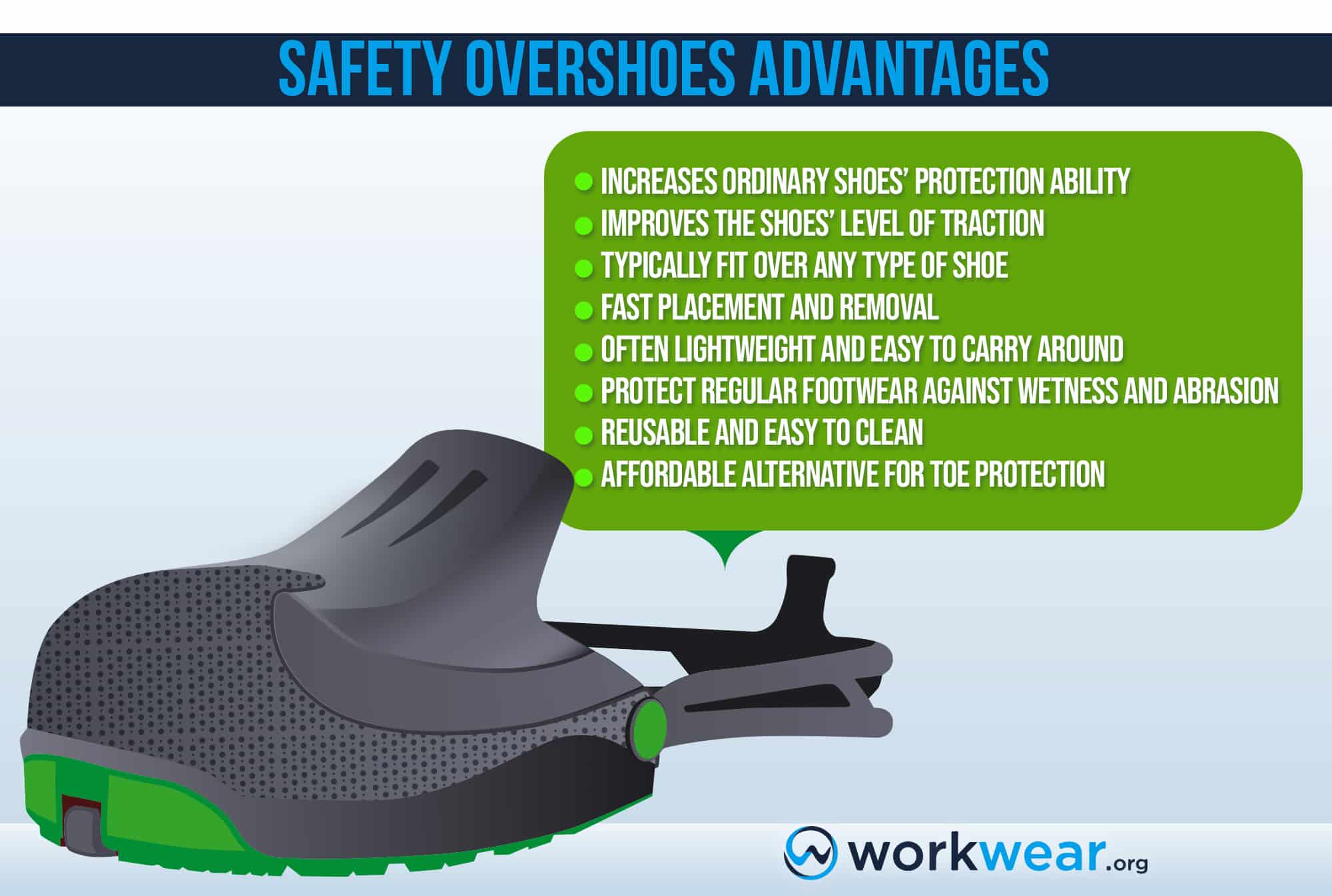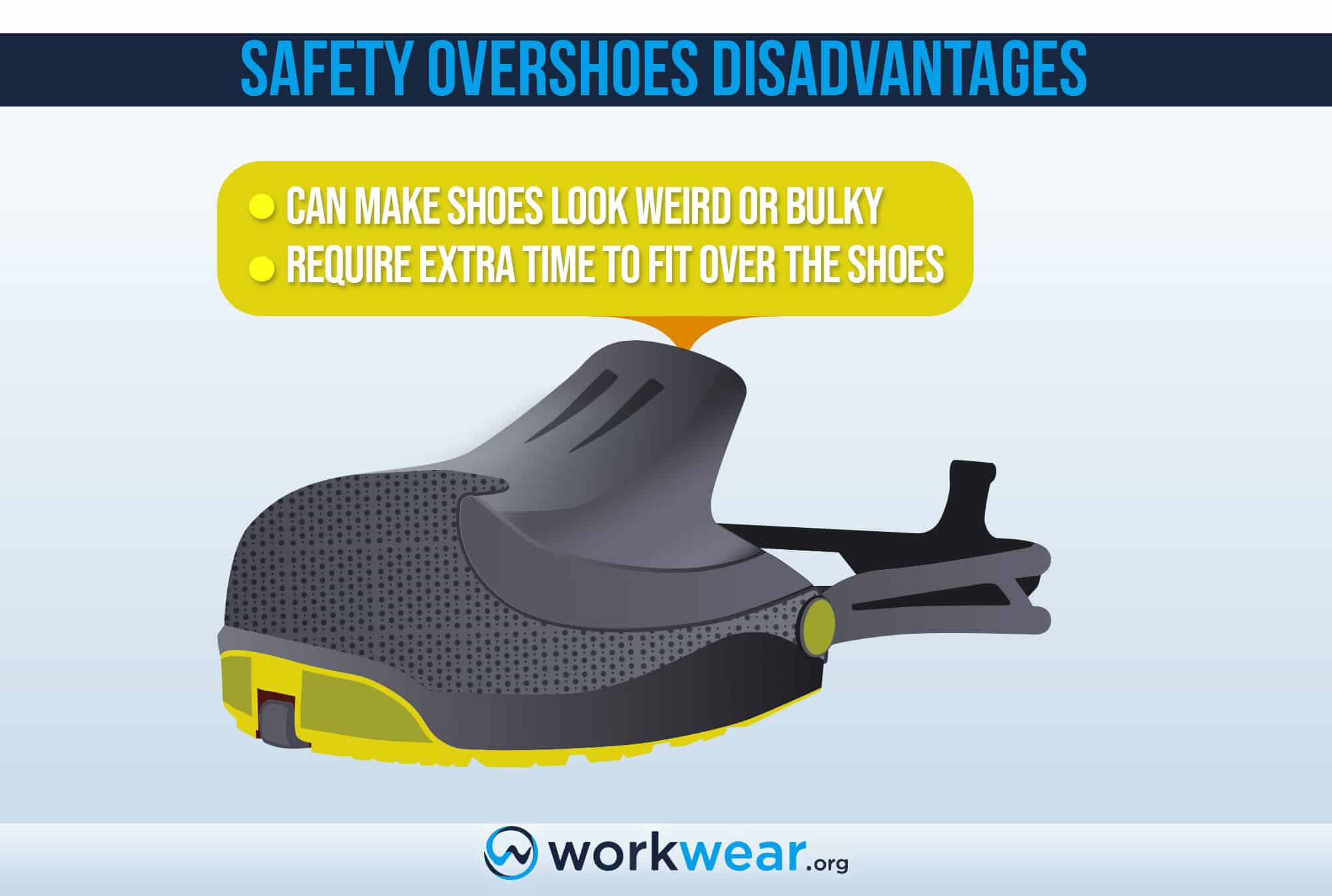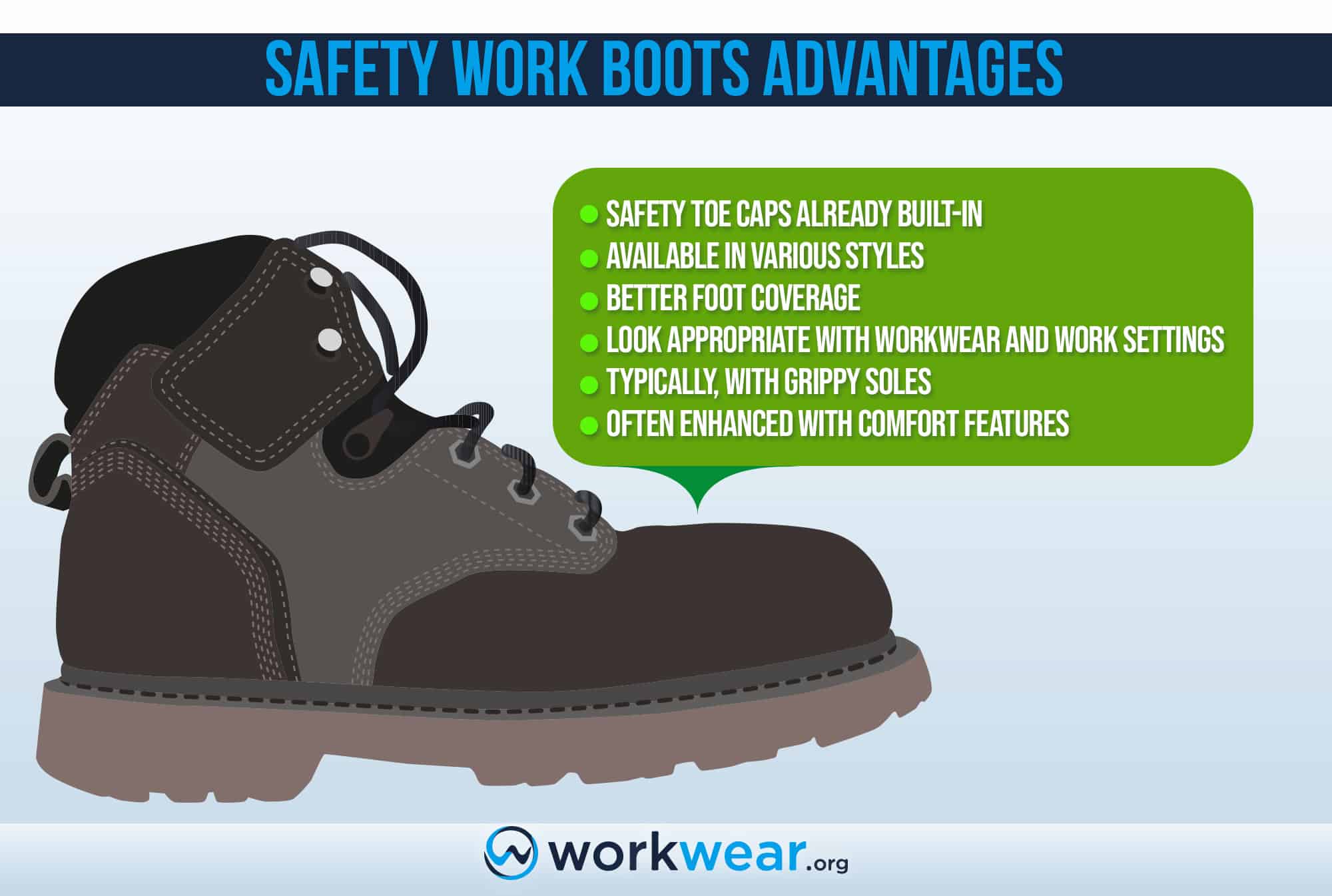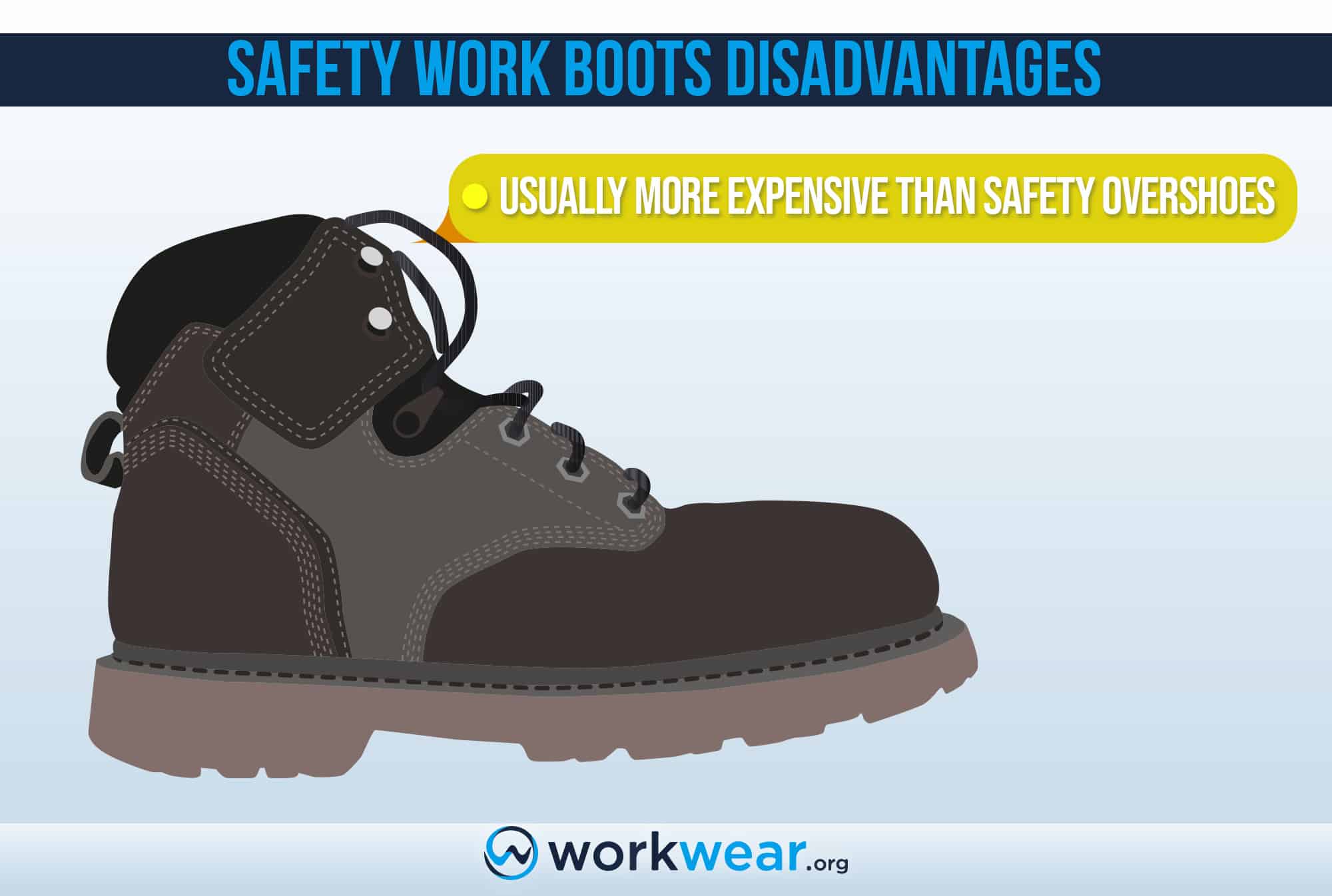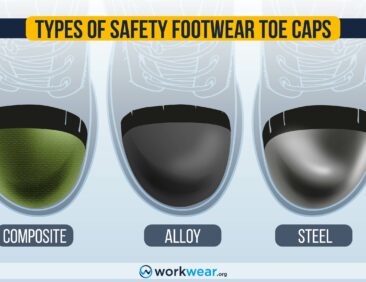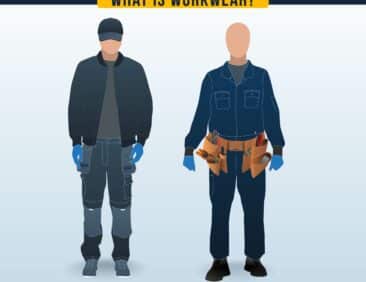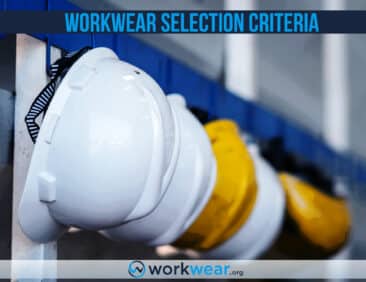Safety Overshoes vs. Safety Boots
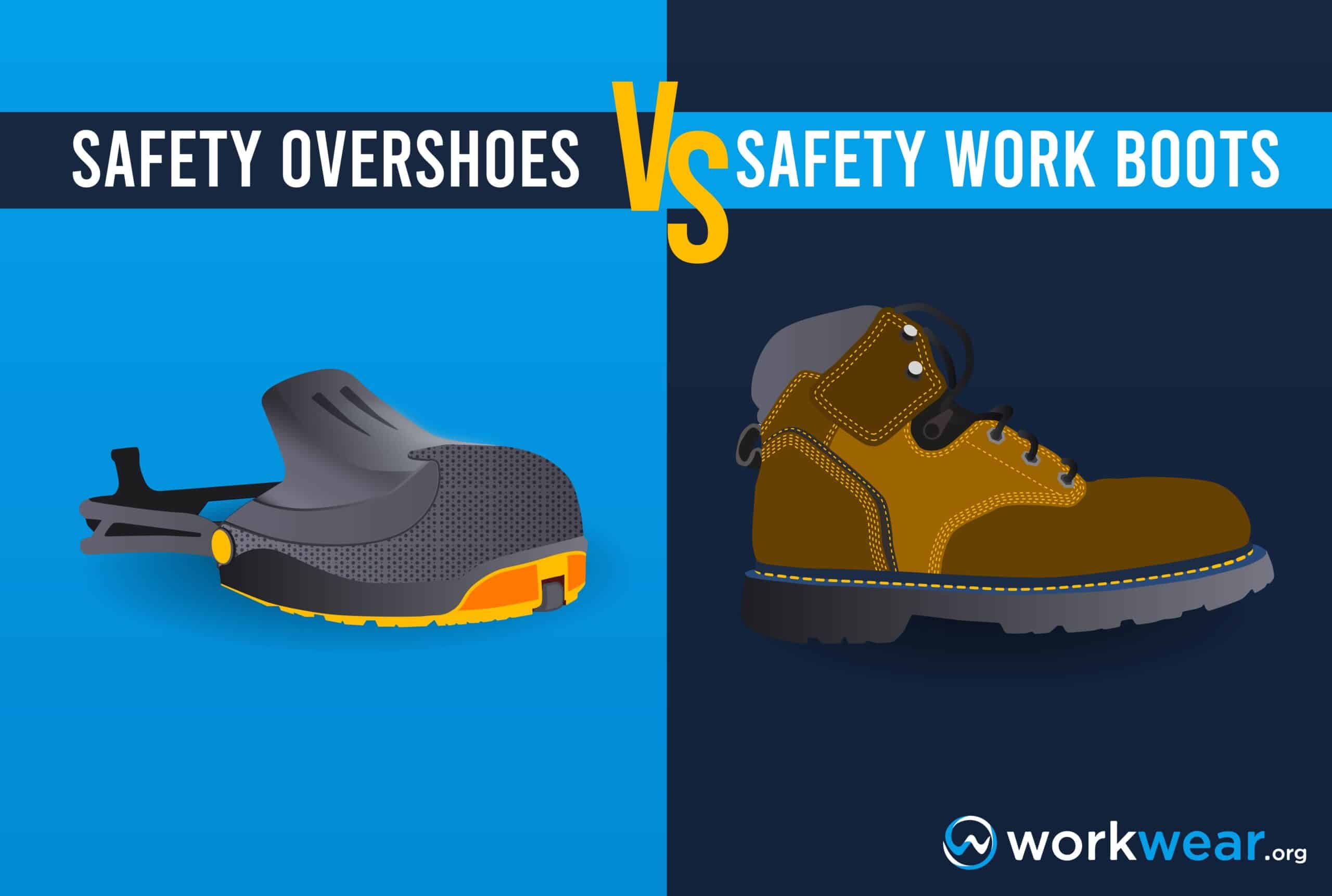
Jobs exposed to hazardous environments require proper safety gear, such as safety work boots. The footwear shields the toes against crushing injuries by using protective toe caps. However, there’s another option that enhances regular shoes for better function in challenging environments – and they’re called safety overshoes.
Unlike safety toe caps built into the work boots’ toe box, overshoes are placed on the footwear and can be detached anytime.
The toe caps built into overshoes work the same way as those fitted into safety boots, protecting the toes so they won’t be crushed by heavy falling or rolling objects. This article will teach us more about safety overshoes and how they fare against work boots with safety toes.
Safety Overshoes
Safety overshoes are temporary protective solutions against dangerous compression and impact in the work area.
They’re designed to be fitted easily on top of regular (non-safety) footwear, significantly enhancing their structure to make them safe to use in hazardous conditions.
Safety overshoes include a slip-resistant sole to improve ordinary shoes’ grip on tricky surfaces.
They may have Velcro straps at the back to secure the structure over the shoes.
The toe cap portion may be constructed with steel, alloy, or composite toe caps that are barriers against heavy dropping or rolling objects.
Meanwhile, the rest of the structure is typically made with flexible rubber or TPU.
Key Advantages of Safety Overshoes
Enhances ordinary shoes’ protection level
Safety overshoes quickly increase the protection level of ordinary shoes or boots without safety toes.
By slipping on the overshoes, non-safety footwear is made more suitable for demanding work environments where there are risks of bulky items accidentally dropping or rolling over the feet.
Improves the shoes’ grip on different surfaces
Safety overshoes have a section covering the bottom of the work boot, with the coverage varying from just the tip to the entire sole.
This is made with a grippy material – usually rubber or TPU – that enhances the footwear’s traction, helping promote more stable walking over wet or uneven ground conditions.
Can fit over any shoe
Safety overshoes are made to fit easily over any footwear – even those not usually worn on job sites.
They’re often available in different sizes for better function, transforming virtually any boot or shoe (even the ones with heels) into protective footwear that functions better and more safely in demanding worksites.
Quick placement and removal
The design of safety overshoes allows them to be fitted quickly over any shoe, and removal is just as easy.
This makes it possible for people wearing regular (non-safety) boots and shoes to go to hazardous work areas with reliable toe protection.
Usually lightweight and convenient to carry around
Safety overshoes are typically designed to be lightweight, so they won’t interfere with the foot’s movements when placed over shoes or boots.
They’re small enough to be carried around, ready to convert any footwear to one that can shield the toes against crushing injuries.
Protect regular footwear against abrasion, cuts, and spills
Safety overshoes cover a portion or most of the structure of regular shoes (depending on the design).
They shield specific areas of the footwear against abrasion that may be encountered in challenging settings, as well as from cuts and liquid spills.
Reusable and easy to clean
Safety overshoes can be used multiple times over different boots and shoes. They can easily transform regular shoes into protective footwear, and their detachable, temporary design makes them easy to clean. Since the overshoes are placed outside the footwear, they can be maximized by multiple users as needed.
Affordable option for toe protection
Safety boots can cost a lot, and the expense isn’t justified when the footwear is not used regularly.
Safety overshoes offer a more affordable way of getting the much-needed toe protection – which may be more practical if the safety feature is needed infrequently.
Key Disadvantages of Safety Overshoes
Can make shoes look strange/too bulky
Safety overshoes are built for function, not form.
They can negatively affect the footwear’s design when fitted onto the shoes or boots, giving them a weird, bulky look.
Safety overshoes may not be for those who want to maintain their footwear’s stylish look all day.
Will need extra time to fit over the shoes
Unlike safety boots and shoes that are always ready to take on hazardous work sites, safety overshoes must be fitted on top of regular shoes to ensure a secure fit.
Putting the overshoes will require a short time which may still be too much for critical moments requiring the fastest response period.
Uses of Safety Overshoes
Safety overshoes are suitable for professionals who may need to go to possibly hazardous areas for short periods but are not always exposed to impact and compression threats, such as the following jobs:
- Building assessors
- CEOs inspecting industrial plants
- Administrative staff going around the manufacturing area
- Health and sanitation inspectors
Safety Boots
Safety boots are work boots that have safety toe caps fitted in.
They usually look just like ordinary boots, but they’re enhanced with safety features to make them suitable for challenging work environments.
Safety boots often come with various features that work not only for protection against hazards but also for comfort and aesthetic enhancements.
They come in different designs, and even the safety toe caps are offered in several options catering to varying needs and preferences.
Key Advantages of Safety Boots
Built-in safety toe caps
Safety boots already have toe caps built into the structure.
They’re always ready to guard the toes and prevent serious crushing injuries from falling items, which may be present in hazardous work surroundings.
Wide variety of designs
Work boots with safety toe caps are available in various designs. They come in traditional work boot profiles with heavy-duty structures and are also offered in sporty, more lightweight styles.
The wide variety of design options makes it easy to find a safety work boot catering to your needs.
Better foot coverage
A safety work boot covers the entire foot and ankle, even extending to the calf area, depending on the height.
The structure delivers better protection against dangerous compression and impact and against other work area risks – including wetness and abrasion.
Look appropriate with workwear
Safety boots come in different styles that match equally varying work environments.
The footwear looks appropriate with the corresponding workwear, unlike safety overshoes that can stand out against outfits in a strange way.
Typically, with a strong grip
High-quality safety boots typically have outsoles delivering a strong grip on different surfaces.
The superior traction promotes a safer walking experience on slippery or unstable ground conditions.
Often have comfort enhancements
Work boots with safety to caps are typically enhanced with other high-performance features.
They often have comfort enhancements – including shock absorption and generous cushioning – that make the footwear much easier and comfier to use even over long periods.
Key Disadvantages of Safety Boots
More expensive than safety overshoes
Generally, safety boots are pricier than safety overshoes.
But this is because the boots are complete footwear options that can be used independently, unlike the overshoes that need to be fitted into separate boots.
Uses of Safety Boots
Work boots with safety toes are suitable for work conditions with high exposure to objects that can accidentally roll or drop onto the feet, such as the settings for these jobs:
- Construction workers
- Loggers
- Heavy equipment operators
- Warehouse personnel
|
Pros |
Cons |
|
|---|---|---|
| Safety Overshoes |
|
|
| Safety Boots |
|
|
Conclusion
Safety overshoes and safety boots protect the toes against grave harm from dangerous impact and compression. Safety overshoes are designed to temporarily improve protection when fitted over ordinary shoes, making them suitable for use in potentially hazardous environments. They’re ideal for those who may only need the enhanced protection infrequently, such as workers or visitors who occasionally go to demanding areas. On the other hand, safety boots offer more extensive protection against falling objects and other safety risks. Work boots with safety toes provide all-around foot protection and high-performance benefits that overshoes cannot.
FAQs
- Do the soles of safety overshoes only cover the tip of the shoes’ soles?
- It depends. Some safety overshoes have soles that go until the middle of the shoes, while others look like another layer of footwear and cover the entire sole.
- Can safety overshoes be used over every type of shoe?
- In general, yes. It’s worth noting that the right size should be chosen for the corresponding footwear. This is to ensure that the overshoes fit correctly over the shoes and continue to be secured in place while in use.
- Aside from compact and impression threats, what other hazards can overshoes offer protection?
- Safety overshoes can also protect the shoes and feet against abrasion and wetness from liquid spills, cuts, and debris in the work environment.
- What makes safety overshoes adaptable to almost every type of shoe?
- Safety overshoes may be designed with stretchable straps (made of rubber or TPU) that can easily fit over different shoe styles. On the other hand, some overshoes have interchangeable straps that can be swapped to accommodate certain shoes underneath.
